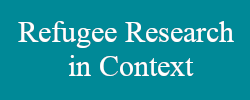OVERVIEW :
The Central American countries of Guatemala, Honduras and El Salvador are experiencing some of the world’s highest levels of homicidal violence, often surpassing active warzones . Violence and other abuses committed by organized criminal groups as well as economic underdevelopment have generated the latest wave of forced displacement from the region. Despite the levels of violence those fleeing the Northern Triangle countries continue to be characterized under the guise of economic migrants which has increased the barriers to asylum.
Mano-dura (hardline) policies in Honduras, El Salvador, and Guatemala have counter-productively led to the increased professionalization of criminal organizations, human rights abuses by authorities, and further population flight. Mexican and American initiatives reinforcing conventional border security measures without addressing the systemic deficiencies have increased the threats posed to migrants. Official corruption and abuse has led to a distrust of authorities while simultaneously pushing migrants towards more dangerous routes. The current population of displaced persons is ever increasingly composed of unaccompanied minors, women, and families. Their journeys are characterized by persistent threats of exploitation, violence, and abuse at the hands of both criminal groups and corrupt authorities.
The ones who make it across the border are often placed in detention facilities which are ill equipped to deal with sensitive cases such as unaccompanied minors or members of the LGBTQ community. Detention conditions as well as the lengthy and often unsuccessful asylum process has deterred many migrants from pursuing legal migration routes. Furthermore, those who fail often undertake multiple attempts, which has led to the phenomenon of perpetual migrants.




